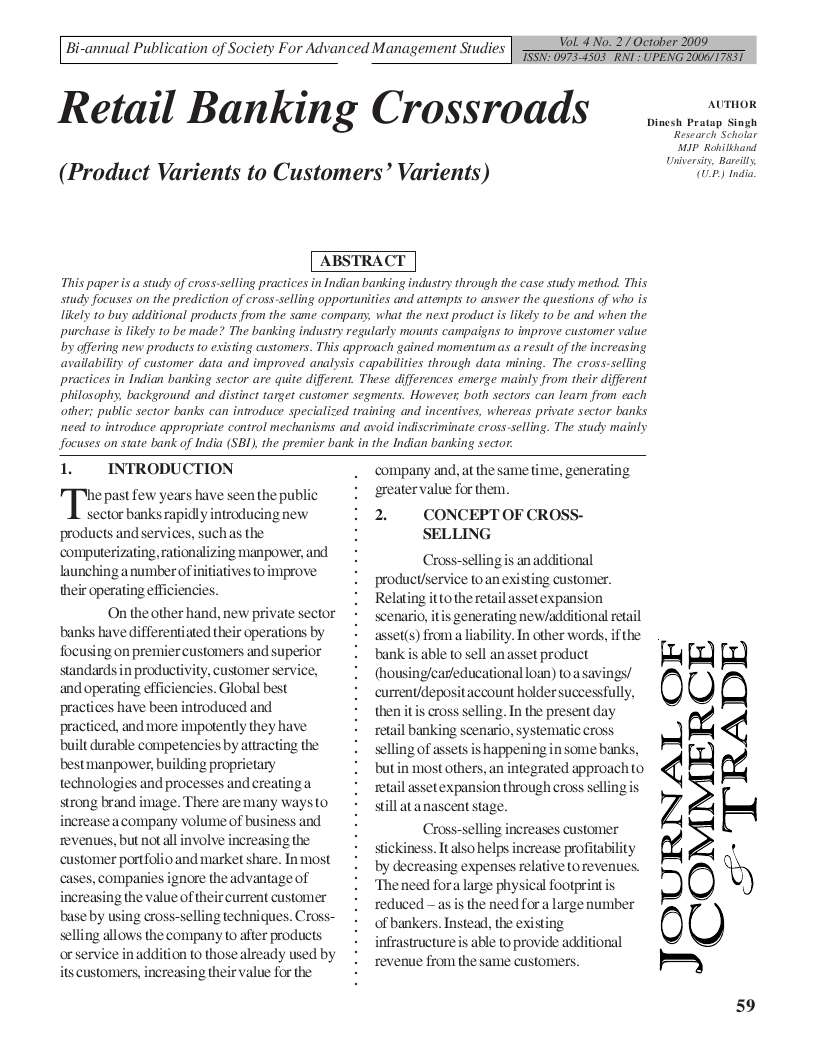Retail Banking Crossroads (Product Variants to Customers’ Variants)
DOI:
https://doi.org/10.26703/jct.v4i2.426Keywords:
Retail Banking, SBI, Cross-Selling, Indian Banking IndustryAbstract
This paper is a study of cross-selling practices in Indian banking industry through the case study method. This study focuses on the prediction of cross-selling opportunities and attempts to answer the questions of who is likely to buy additional products from the same company, what the next product is likely to be and when the purchase is likely to be made? The banking industry regularly mounts campaigns to improve customer value by offering new products to existing customers. This approach gained momentum as a result of the increasing availability of customer data and improved analysis capabilities through data mining. The cross-selling practices in Indian banking sector are quite different. These differences emerge mainly from their different philosophy, background and distinct target customer segments. However, both sectors can learn from each other; public sector banks can introduce specialized training and incentives, whereas private sector banks need to introduce appropriate control mechanisms and avoid indiscriminate cross-selling. The study mainly focuses on state bank of India (SBI), the premier bank in the Indian banking sector.
Downloads
Metrics
References
Cross-selling, the retail
key Freny Patel in Mumbai | March 30, 2004 10:08 IST
State Bank of India AGM held on August 7, 2001
Highlights from Chairman’s Speech | Question & Answers Sessions
The Celent Report on Cross Sell Ratio (the number of products per client)
According to Money magazine, it costs a bank five times less to cross sell an existing client than to acquire a new one. Another finding says that it costs four times as much to get a new customer as it does to keep an existing one. The underlying is the cost advantage of selling to an existing client.
S.Krishnamurthy, chief executive officer, SBI Life, said, “We have been able to cover 50% of borrowers of fresh home loans. Since December, we have underwritten about 1,200 home loan proposals each month. Against SBI’s expectation of disbursing 2,00,000 home loans in fiscal 2005, we have targeted to cover 1,00,000 of these borrowers.”
Banking in Asia: acquiring a profit mindset — by McKinsey & Co, a global consultancy firm, said, “Banks lack cross-selling capabilities at the branch level, partly as a result of lack of incentive and the fact that banking products have always been bought and not sold.”
www.googel.com
www.sbi.com

Downloads
Published
How to Cite
Issue
Section
License
Copyright (c) 2009 Dinesh Pratap Singh

This work is licensed under a Creative Commons Attribution 4.0 International License.














